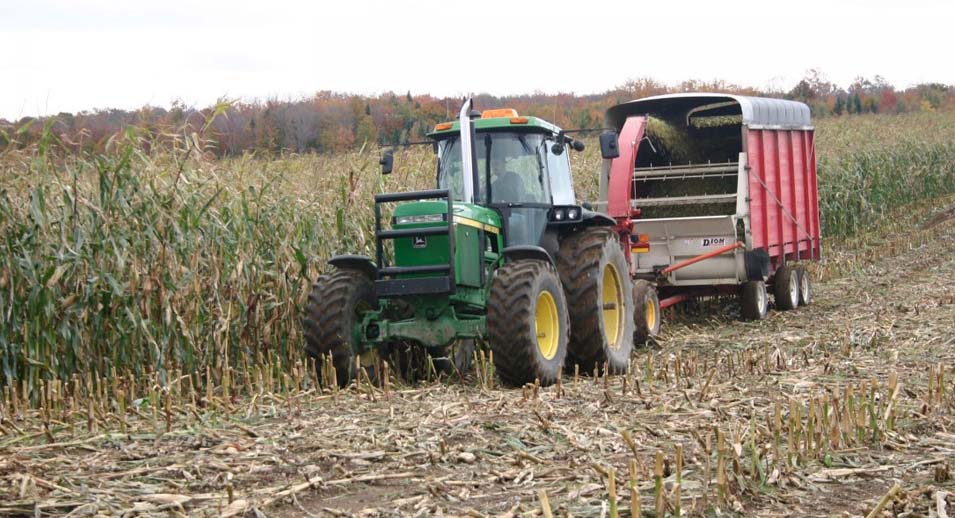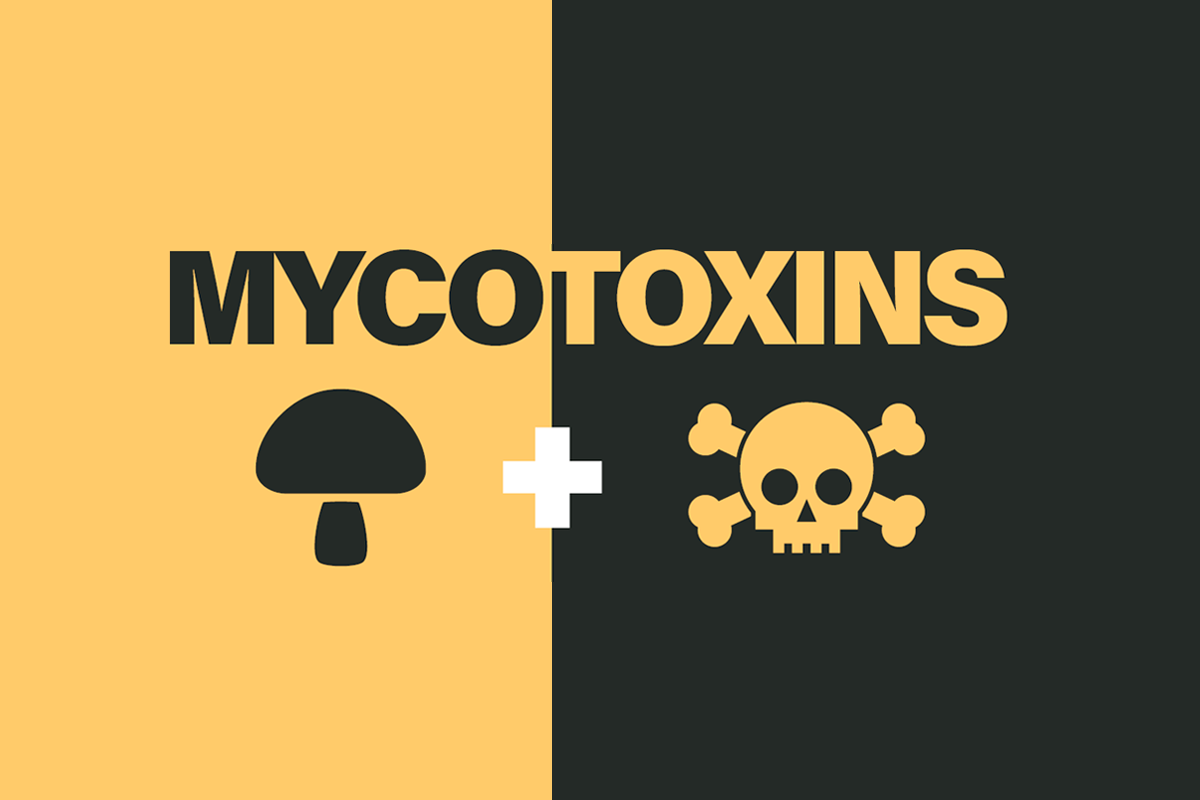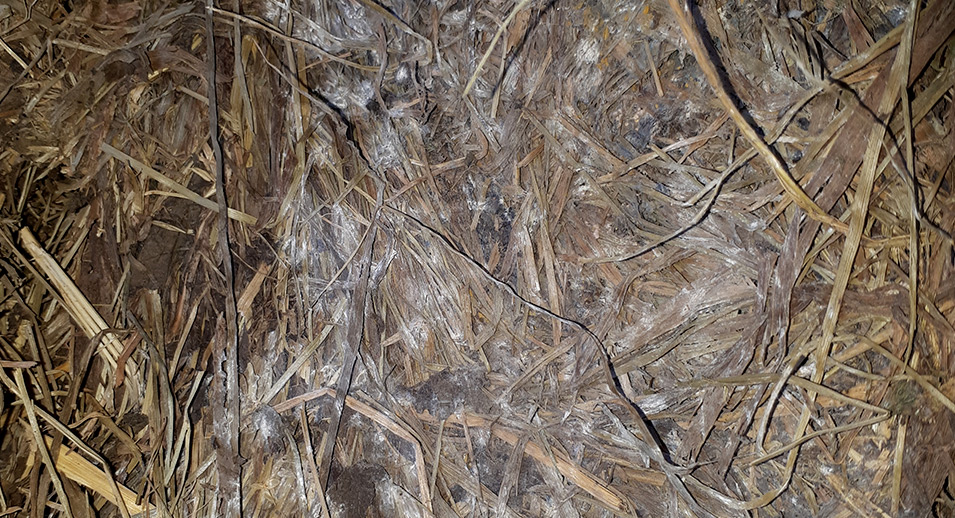What Are Our Options in a Mycotoxin-Prone Year?
- 26, January 2024
In Canada, the main mycotoxins that can affect dairy cattle are deoxynivalenol (DON), zearalenone (ZEA) and T-2/HT-2. These mycotoxins are produced by molds of the genus Fusarium, which mainly originate from plant diseases in corn and small grain crops. The two most important diseases caused by Fusarium in Canada are Gibberella ear rot and Gibberella stalk rot.
Rain plays an important role in the life cycle of these two diseases. Firstly, Fusarium needs rain to produce spores. These spores can then travel several kilometres to infect a corn or grain plot. Once infected plants are harvested, contaminated residues are left on the ground. The following year, rainfall will again contribute to the spread of the disease by creating spore-containing splashes, which can spread the disease to a susceptible plant that has grown among contaminated residues.
A rainy year therefore means a higher risk of Fusarium infection. In many regions this year, we’ll have to watch out for symptoms associated with mycotoxins.
Analyses in your toolbox
When clinical signs are observed in animals (Figure 1), several analyses are available to determine whether the symptoms detected are indeed caused by the presence of mycotoxins.
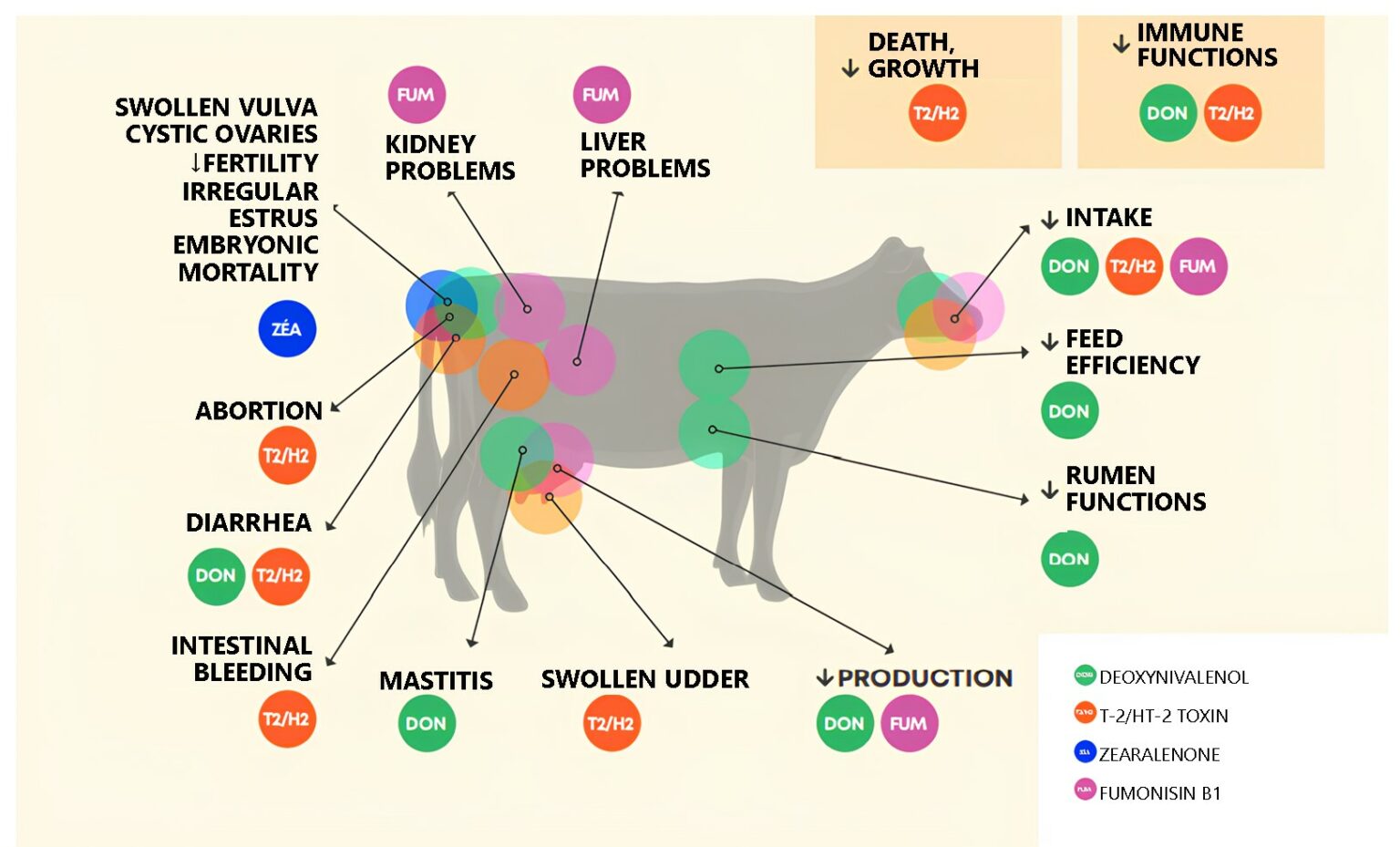
First, there are feed analyses, useful to check the presence of mycotoxins in the ration, or to identify the problematic ingredient. The challenge with this type of analysis is getting a sample that is representative of the actual mycotoxin concentration. Therefore, a rigorous sampling process is crucial to obtain relevant results. The Lactanet website outlines procedures for sampling wet and dry feed as well as thresholds of concern.
It is also possible to measure levels of DON and its metabolite (DOM-1) in the blood of cows, with the help of a veterinarian. The advantage of this type of analysis is that the cows do the feed sampling work for us, which is simpler and quicker than trying to get a representative feed sample manually.
Once the presence of mycotoxins has been confirmed at levels of concern, few solutions can be considered, such as replacing the contaminated feed, reducing its inclusion rate in the ration, or using a feed additive with the ability to bind mycotoxins. Unfortunately, these solutions can be difficult to apply, costly and not always effective.
More emphasis must be placed on prevention
Once the problem has been identified and short-term solutions found, it’s important to determine how to prevent the problem in future years. In a study published in 2021, a group of international experts came together to discuss the management of mycotoxin-related problems. They had to answer the following question: What strategies are effective for minimizing DON and ZEA contamination during corn growth? Several strategies were proposed and then ranked according to their importance (Figure 2).
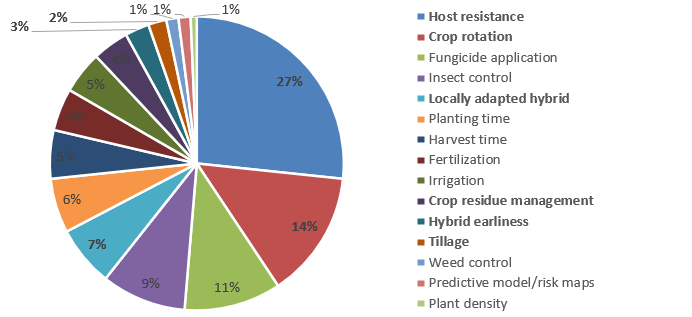
Among the 15 strategies listed, several can be combined. The choice of hybrid alone accounts for 36% of votes (host resistance, locally adapted, earliness). The absence of contaminated residues accounts for 20% of votes (crop rotation, residue management, tillage). These strategies alone are by far the most important, accounting for 56% of votes.
Genetics and the absence of contaminated residues: two essential elements
One important question is whether or not all corn hybrids sold have a good level of resistance to Gibberella ear rot. Researchers studied the question and showed that there is significant variability in DON levels among corn hybrids grown in Quebec under the same conditions (Farimani, 2014). During a mycotoxin-prone year, the most disease-resistant hybrid contained 0.03 to 0.27 ppm DON, depending on the test site, whereas the most susceptible hybrid contained 2.25 to 4.93 ppm DON. No wonder experts attach so much importance to the choice of hybrid!
But how can you check the level of resistance to Gibberella ear rot? The first thing to do is to check whether there is an independent organization in your area that evaluates the resistance of hybrids/cultivars every year. If such tests are not available, contact the seed representative. Some companies evaluate the resistance of their hybrids/cultivars to Gibberella ear rot. Unfortunately, others fail to report the information or assess very general indicators that are not specific to Gibberella ear rot. If your business is at high risk of having problems with mycotoxins and your supplier doesn’t have information on the subject, you have to ask yourself whether you can really do without this information. Naturally, don’t forget to choose a hybrid or cultivar that is suited to your conditions, and that won’t be too late maturing.
When it comes to crop residues, two main strategies can be considered. The first is to ensure a rotation that avoids the successive presence of Gibberella-susceptible crops. If this is not possible, the other option is to bury the residues of a susceptible crop before planting another susceptible crop in the same field. To be effective, it must be tillage. However, tillage is not an optimal strategy for farms wishing to improve soil health. If you’re in this situation, you’ll need to carefully consider your options!




